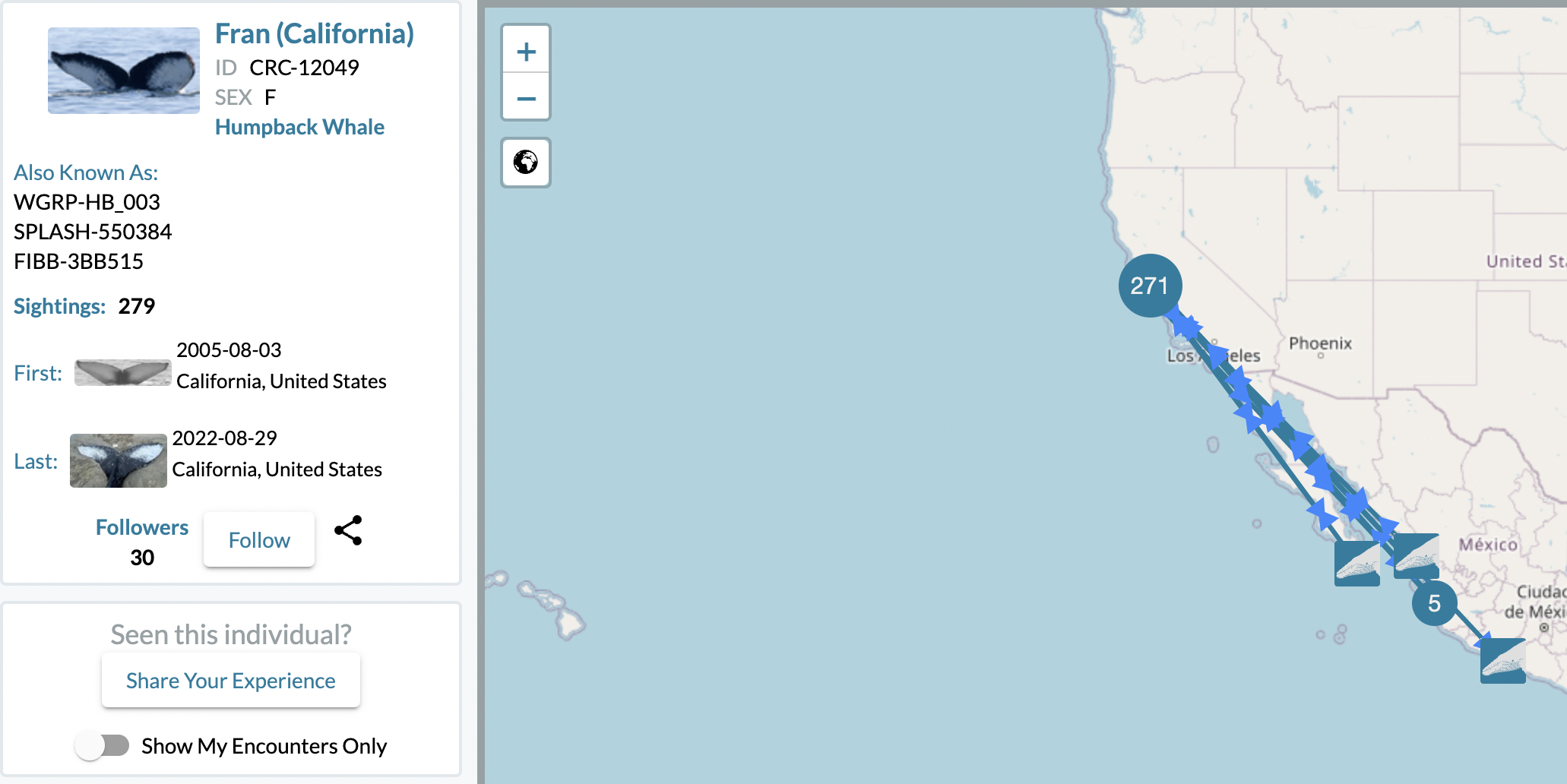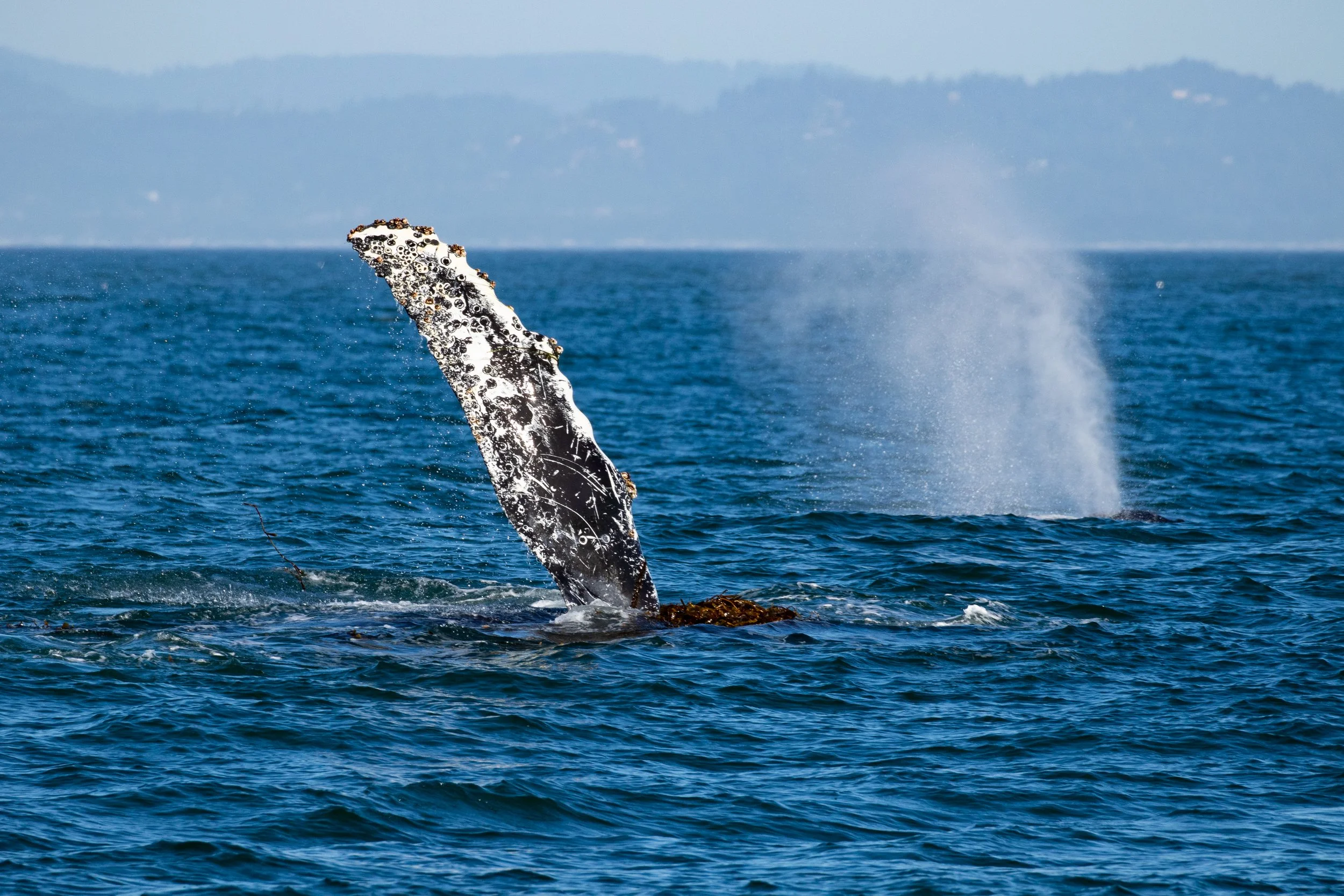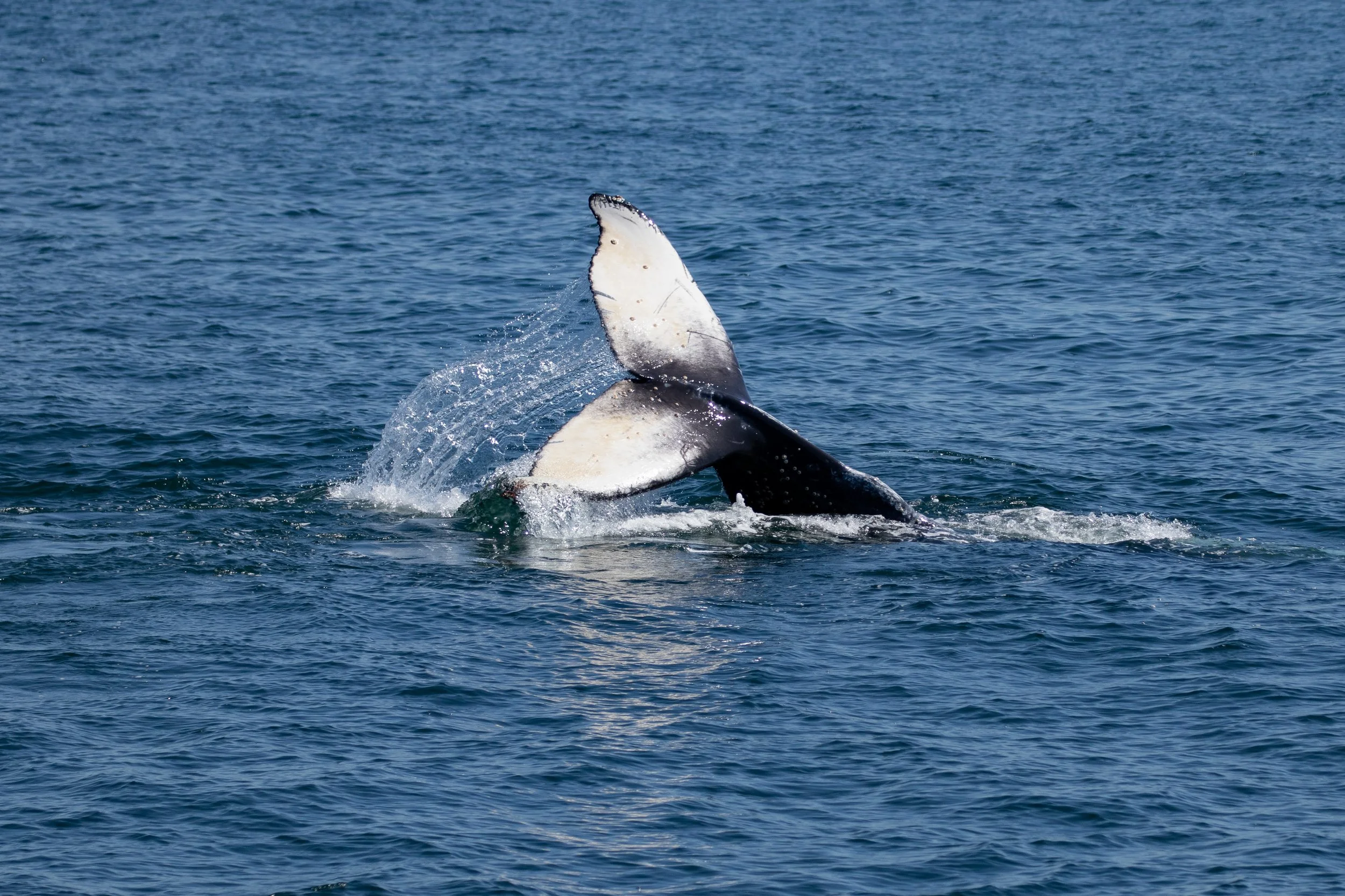A Farewell for Fran
By Katlyn Taylor, Safina Center Junior Fellow
Fran the humpback whale. ©Katlyn Taylor
One of the best-known humpback whales in California washed ashore dead on August 28th in Half Moon Bay. The whales have been moving widely along the coast this season, outside their normal zones. Fran has been seen in Monterey Bay each feeding season since her first summer with her mom Big Fin, in 2005. This year she had her first calf make it to the feeding grounds with her. We were so excited to meet her new baby.
Fran waving her flipper. ©Katlyn Taylor
Fran was a very recognizable and frequently sighted whale. She was also well tracked in the online database www.happywhale.com. Even in winter, we knew where she was because people were sending updates in the database from the breeding grounds.
Fran’s Happy Whale profile. ©Katlyn Taylor
Fran connected me with the team at the Whales of Guerrero project. When I first met project leader, Katherina Audley, she excitedly told me about spending time with Fran. She also said the phrase, “we have whales in common,” connecting us humans with the animals that swim from central California to southern Mexico. We each get to spend time with the same whales during different times of their life, which made me feel like we are each obligated to care for them in their spaces.
Fran and her calf, who’s fate remains uncertain in the wake of her mother’s death. ©Katlyn Taylor
The loss of Fran is also the loss of an opportunity for learning. The questions we could have answered by watching her over time will remain a mystery. We were able to observe social associations between Fran and other whales like Lim and Inverse over the years. This is something still poorly understood in baleen whales. Would she have associated with those whales now that she had become a mother? Would she make new bonds with other whales?
Inverse showing a flipper while covered in kelp while Fran exhales in the background. ©Katlyn Taylor
Fran was just beginning the era of her reproductive years. Her calf is a third generation Monterey Bay whale! Would she always bring her babies here? How many generations would we get to enjoy over the years? We currently do not know the fate of her calf. She has not been seen since Fran died. So, we may have lost two whales in one incident.
Fran’s 2020-2021 calf. ©Katlyn Taylor
Both productive females in this family line died by human caused threats. Big Fin has not been seen since January of 2015 when she was reported in poor health and entangled in fishing gear. Given her frequency of sightings in Monterey and lack thereof since, she is presumed dead. Fran became ocean roadkill, hit by a large ship. She was hit so hard that her spine separated from her skull. Our consumerism comes at a cost, these are some of the ones that most people never see. It costs more than most people realize, as whales play an important role in the ocean ecosystem. Removing them from the environment puts us at risk ecologically.
Fran’s fluke on the beach. ©Katlyn Taylor
I went to see Fran’s carcass and say farewell. I left a few flowers on her exposed heart. I do find some peace in knowing what happened to her, but we need to do better by our whales when they are here.
Farewell flowers for Fran. ©Katlyn Taylor
Update: Fran’s calf, Aria, survived the winter without her mother and was spotted feeding in Monterey Bay. Read about her in Katlyn Taylor’s follow up blog.








